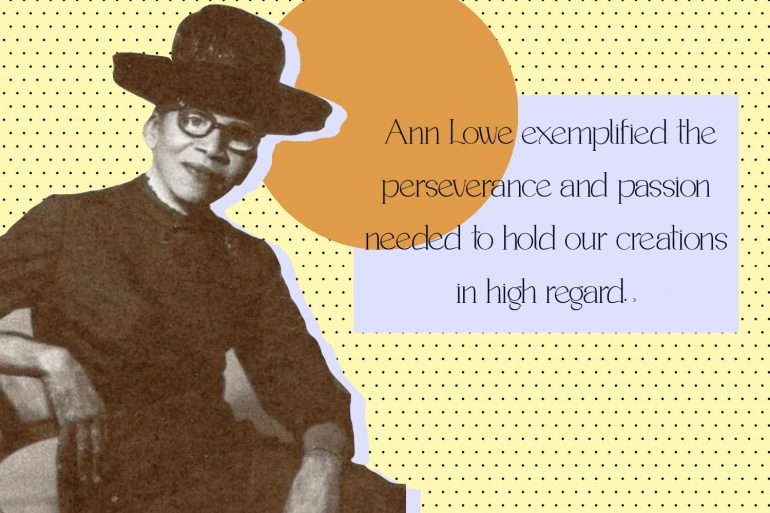From the passion that bleeds into inspiration and completed works, art is simply an extension of a creative’s heart and soul. There is a pride that comes with being recognized, a sense of worth that comes with being acknowledged, a feeling that fuels our desire for validation. It’s only natural to feel that stealing art is a personal offense, a theft of identity. No one is more familiar with this feeling than the expansive lists of Black artists who had their names omitted from history even as their work was celebrated for years. In 1953, Jacqueline Bouvier wore a wedding dress that promptly became one of the best-remembered bridal gowns of all time. Despite being praised and admired for years, the designer of Bouvier’s iconic dress never received recognition.
Ann Lowe was an African-American couturier with designs coveted by high society. Her gift in fashion descends from generations of talent. Her mother and grandmother were both seamstresses for high society families in Alabama, which inspired her desire to follow in their footsteps. Lowe’s skills flourished under the tutelage of her mother and grandmother. She used everything she learned from them to take responsibility for their commissions and finish ball gowns that were left unfinished after their deaths. Lowe’s passion and talent eventually led her away from home to New York. She enrolled at S.T. Taylor Design School, where she was left to learn in a segregated room by herself. Lowe’s journey truly began once she moved to Florida following her graduation to open her dress shop. Despite her quick success in attracting wealthy clients, the woman wearing her dresses continued to erase her name, which prompted her to open her second salon.
Her career in fashion lasted roughly fifty years, satisfying clients with design elements that piqued all clients’ interests, intrigued by her work’s uniqueness. Lowe implemented floral designs in her dresses using signature flowers and the trapunto technique to create puffy, decorative details, elements that became a signature of her work. Lowe’s status as one of America’s most sought-after courtiers did not shield her from racial discrimination. The richness of Lowe’s design did not reflect the reality of her financial situation. Time and time again, wealthy clients took advantage of their status and Lowe’s position and kindness to avoid paying her talent’s true worth. Lowe’s talent was undeniable; her use of fine fabrics and expertise of her handiwork was worth far more than her commission. Lowe had an uncompromising vision for who she wanted to wear her dresses. They were for the wealthiest, most prestigious, societal elite such as Olivia de Havilland, an actress who wore her designs to accept an Academy Award, generations of du Ponts, the Roosevelts, the Rockefellers, the Kennedys.
A name is a very powerful thing. Ann Lowe is not the first, nor the last to ever have her name kept a secret. From the cheap costs of her custom designs to the adversity that came with being a black woman in America, Ann Lowe exemplified the perseverance and passion needed to hold our creations in high regard. Lowe knew herself best. She knew why she continued to create despite the absence of her name in conversations about the legacy she inspired in fashion today.
Words by Bri Shufford
Graphic by Day Toscano

